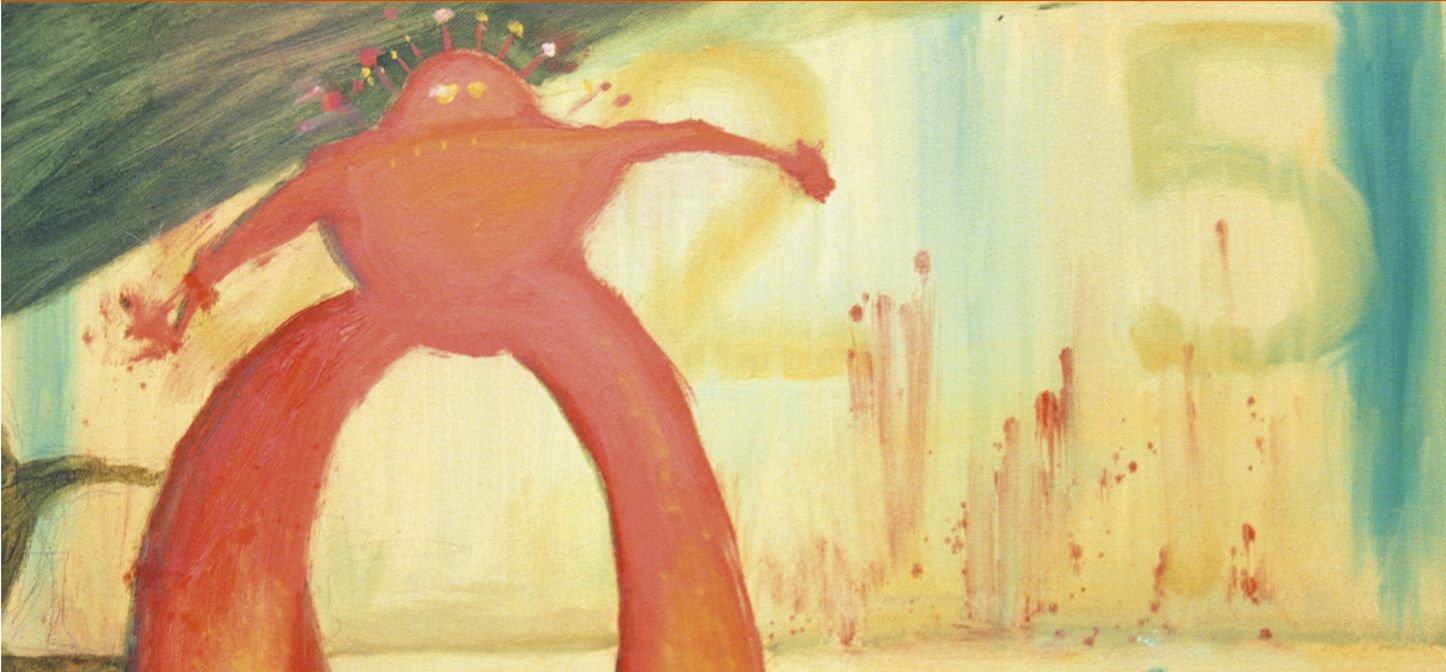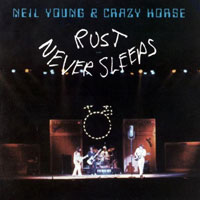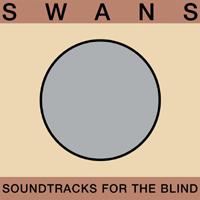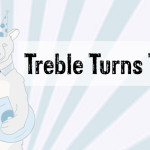10 Essential 10th Albums

Back when Treble turned 10, one of the features we had intended to run was a list of our favorite 10th albums (you know, albums that were the 10th chronologically in a band’s catalog). Somehow we forgot to do that. But there’s still some time yet before we turn 11, so we decided to go ahead and run with it. It takes a special kind of artist to keep up a career long enough to release 10 albums, let alone actually stay good long enough for that 10th album to be memorable. So we’re honoring 10 artists who hit that landmark at their peak, or close to it anyhow. So, let’s get to it — our 10 Essential 10th Albums.
 John Coltrane – Ole Coltrane
John Coltrane – Ole Coltrane
(1961; Atlantic)
When dealing with jazz, determining which albums to count as belonging to a particular artist can be a dicey prospect. Do you include albums recorded as a sideman, or those credited to all players in a combo, or perhaps two big-name collaborators? For the sake of slimming it down a bit, John Coltrane’s output is easier to measure when it’s his name only at the top of the LP, and by that measure, this Spanish-themed session — one of his strongest — ends up at number 10. Likely inspired in part by Miles Davis’ own Sketches of Spain, Coltrane’s take on Spanish sounds hews much closer to hard bop than the orchestral third-stream sound Davis created with arranger Gil Evans. It’s a work of rhythmic excellence, each of its three lengthy tracks a thrill from start to finish. – JT
 The Beatles – The Beatles
The Beatles – The Beatles
(1968; Apple)
Far from being The Beatles’ most representative work, the “White Album” was recorded during a time of turmoil for the band and is, in many ways, a collection of 30 solo tracks by the group’s individual members. Still, the songs on The Beatles cover more ground than many bands do in their entire discography, and songs like “Helter Skelter,” “I’m So Tired,” “Don’t Pass Me By,” and “While My Guitar Gently Sleeps,” serve as iconic first-looks into the post-Beatles careers of John, Paul, George, and Ringo. Clocking in at 93 minutes, the White Album is a fun, if lengthy, romp through the collective-minds of one the most profoundly influential rock bands in history. – AK
 The Rolling Stones – Exile on Main Street
The Rolling Stones – Exile on Main Street
(1972; Rolling Stones)
Sometimes, despite every contrarian and irreverent impulse you’ve picked up from freethinkers and originals down the years, you stop, and genuflect: Behold the great album. Released 10 years after the Stones first ventured into London nightclubs, armed with bad boy blues licks, looks and lips, Exile on Main Street is the defining endpoint for the band’s opening decade. And 40 years later it’s still wondrous country/blues/ rock ‘n’ roll roadhouse jukebox shitshow recorded (mostly) in a mansion on the Cote d’Azur. It had a couple of hits, “Tumbling Dice” and Keef’s “Happy,” but the album tracks are really the soul of Exile. “Ventilator Blues” is a-week-of-filth good, and “Torn and Frayed” is equally buoyed by hope and desperation. Of course, the Stones made some good albums in the wake of Exile — the follow up, Goats Head Soup, and the totally fun Some Girls spring quickly to mind. But with the band in its sixth decade, it’s now fair to say they never delivered a long-player as accomplished as Exile. And best of all it comes in handy when you want to rock away the conventional wisdom. – SC
 David Bowie – Station to Station
David Bowie – Station to Station
(1976; RCA)
Since Bowie released his 24th album last year, record no. 10 still feels like aeons ago. But at the time, Station to Station was a bold step forward by an already daring artist. Combining a bouncy, post-punk vibe with dark, desperate imagery, 1976 saw the birth of Bowie’s Thin White Duke persona — a grave combination of debonair, drug abuse, and morbid thoughts on both society and himself. From it’s ten minute, self-titled opener to the closing ballad “Wild is the Wind,” this manifestation of Bowie sang dark, moody love songs with an emotionless timbre that made the tracks even more striking. Add in a slow, noisy songwriting approach more parts Joy Division than “Suffragette City,” and you have all the ingredients you need for a monumental Bowie record. And it doesn’t hurt that the sound developed here would go on to influence the timeless Berlin Trilogy. – AK
 Funkadelic – One Nation Under a Groove
Funkadelic – One Nation Under a Groove
(1978; Westbound)
The best strategy for listening to Funkadelic’s best selling album, is to skip the songs that are expressly about shit, those being “Promentalshitbackwashpsychosis Enema Squad” and “P.E. Squad/Doo Doo Chasers,” and proceed to the good shit. Fortunately, it starts off with one the great title tracks in rock history, a seven-plus minute bliss ride to a better world featuring Walter “Junie” Morrison who just joined Funkadelic from the Ohio Players. Also a blast is the Boosty Collins adventure “Cholly,” and the spaced out sexiness of “Into You” showcases the basso pro-funk-do vocals from the late Ray “Stingray” Davis. – SC
 Neil Young – Rust Never Sleeps
Neil Young – Rust Never Sleeps
(1979; Reprise)
Released at the death of the 1970s, Rust Never Sleeps was at the time a collection of new songs, all recorded live, with little bit of post-show knob twiddling and overdubs. That energy makes it one Young’s more vital albums, confidently offering up both the denim-clad hippie by the campfire Neil and the electric, raucous, songs-in-the-key-of-fuck-you Neil. The A-side has some of his most affecting acoustic songs, such “Sail Away,” “Pocahontas,” and best of all, “Thrasher,” a poetic account of leaving CSN&Y and the faith to try something new in your life. It’s one of his best songs. The flip side features the classic, ”Powderfinger,” and the punishing guitar sludge of “Sedan Delivery.” Despite the fact, that the yin and yang versions of the famous “Hey, Hey My My” bookend the album and name check Johnny Rotten, it’s not really Young’s “response to punk rock,” as most of the songs predate 1977 and all that. Never mind the bollocks, indeed. – SC
 Tom Waits – Bone Machine
Tom Waits – Bone Machine
(1992; Island)
Tom Waits was less prolific in the ’80s than he was in the ’70s, and even less prolific in the 1990s, though his period from 1983 to 1992 is arguably (really, it’s inarguable but I won’t push my luck) his strongest string of material ever released. The weirder he got, the better he got, and there’s plenty of twisted genius to be found throughout Bone Machine, his penultimate release for Island Records. And yet, it’s also one of his most accessible albums, beyond how wonderfully creepy it is. It contains some of his best ballads (“Dirt In the Ground”), hardest rockers (“Goin’ Out West”) and a heart-breaking nursery rhyme for jaded adults (“I Don’t Wanna Grow Up”). Waits has released plenty of albums since Bone Machine, most of them excellent to great, but this still marks one of his highest peaks. – JT
 R.E.M. – New Adventures in Hi-Fi
R.E.M. – New Adventures in Hi-Fi
(1996; Warner Bros.)
Pretty much every LP in the R.E.M. catalog seems “rated” just right — Murmur is your classic, Around the Sun is trash, et al. There’s exactly one exception to the rule, and that’s this vastly underrated release. New adventures, indeed: It’s an album full of significant firsts, from writing and recording techniques (mostly from tour soundchecks) to successful guest performers (Patti Smith on “E-Bow the Letter” blows away the crew from Out of Time). Hi-Fi also represents some important lasts, chief among them the final recordings of drummer Bill Berry, whose departure was a drain on the band’s spirit for the rest of their existence. The results here have a slapdash energy and curiosity different from prior rollicking pursuits. Here the band reveled in contrast; it’s surprisingly easy to enjoy both the endless indie-dance wah-wah of “Leave” and the plangent piano of “Electrolite.” Where Document and Green found R.E.M. ready to rise up from the underground, this album holds the final moments when that time in the spotlight really mattered. – AB
 Swans – Soundtracks for the Blind
Swans – Soundtracks for the Blind
(1996; Atavistic)
Soundtracks for the Blind, the last album released by Swans during their first go-round, is not even recognizable as a Swans album. There are very few moments of awe-inspiring art-rock intensity or abrasive industrial clang. It’s less a post-punk album as it is a post-rock album, blending a strange mix of ambient, instrumental drone pieces with recordings of people that Michael Gira interviewed through the course of his career. It’s interspersed with more conventional songs, and a handful of 10-plus-minute epics that find Gira offering his most gorgeously gothic folk a la his other project, Angels of Light. It’s a very peculiar way for a band to close out its career (the first time), but it’s also a mesmerizing work of uncompromising art. They’d come back stronger than ever, of course, but if this were the end of Swans, it wouldn’t have been a bad way to go. – JT
 The Flaming Lips – Yoshimi Battles the Pink Robots
The Flaming Lips – Yoshimi Battles the Pink Robots
(2002; Warner Bros.)
It’s no crime to say you forgot about “She Don’t Use Jelly” or you missed the boat on album No. 9, The Soft Bulletin. Even if you’re not the biggest Flaming Lips fan, you’re probably a fan of Yoshimi. Their only album to go gold in America, it contains arguably their best known song (and first car-commercial jingle): “Do You Realize??”, a sly twist on living much in the same way that R.E.M.’s “The One I Love” is a sly twist on loving. Frontman Wayne Coyne claims that this wasn’t meant as a concept album, but there’s definitely a David-and-Goliath morality (and mortality) play going on in there somewhere. The contrast of sweet melodies and echoing electronic percussion make this neo-psychedelic tale malleable to your every mood—children’s story, young adult sci-fi, graphic novel, or pastel-tinged Cloverfield. – AB
You might also like:




